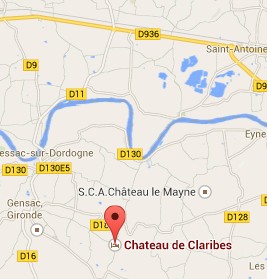A rich history to explore
Castles
In France, it’s said there are just two definitions for, “Chateau”, one is a wine-making property regardless of the size of the house or winery, and the second is the enormous fairy tale chateaux that can be found along the Dordogne Valley to the east of Claribès. Château Monbazillac and Château de Bridoire are the closest. Further along the Dordogne valley towards Sarlat you will find others – Château de Puymartin and Château de Commarque, for example. Many are open to the public and usually have additional attractions, such as gardens, ancient games to play, exhibitions, wine tasting, etc.
Sites Prehistoric de la Vallée de la Vézère
In the same area are many caves from the prehistoric era listed as UNESCO World Heritage sites. Lascaux is probably the most famous. Due to popularity, the original cave is now closed to the public, with a replica having been created close by, now open to the public.
Other caves nearby have stalagmites, stalactites, cave paintings, and one of the greatest masterpieces of prehistoric sculpture.
Sarlat
An historic town with a renowned autumn market. A picturesque tangle of honey-coloured buildings, alleyways and secret squares make up this beautiful town. Sarlat has some of the region’s best-preserved medieval architecture. To appreciate it at its best, visit out of the main summer season and avoid the crowds.
Gallo-Romans
Closer to Claribes, and with a more recent history, is the site of the remains of a Gallo-Roman Villa. The buildings include a poly cusped hall and private baths. Particularly interesting is the quality and extent of mosaics and documented evidence of occupation from Ancient times to the present day.
Château de Claribès has its own documented evidence of Roman occupation. In 1992 archeologists charted a cave, with artefacts (remnants of Roman pottery, Roman tools), found during the exploration now on display in the Musée d’Aquitaine in Bordeaux.






Comment Using Your Favorite